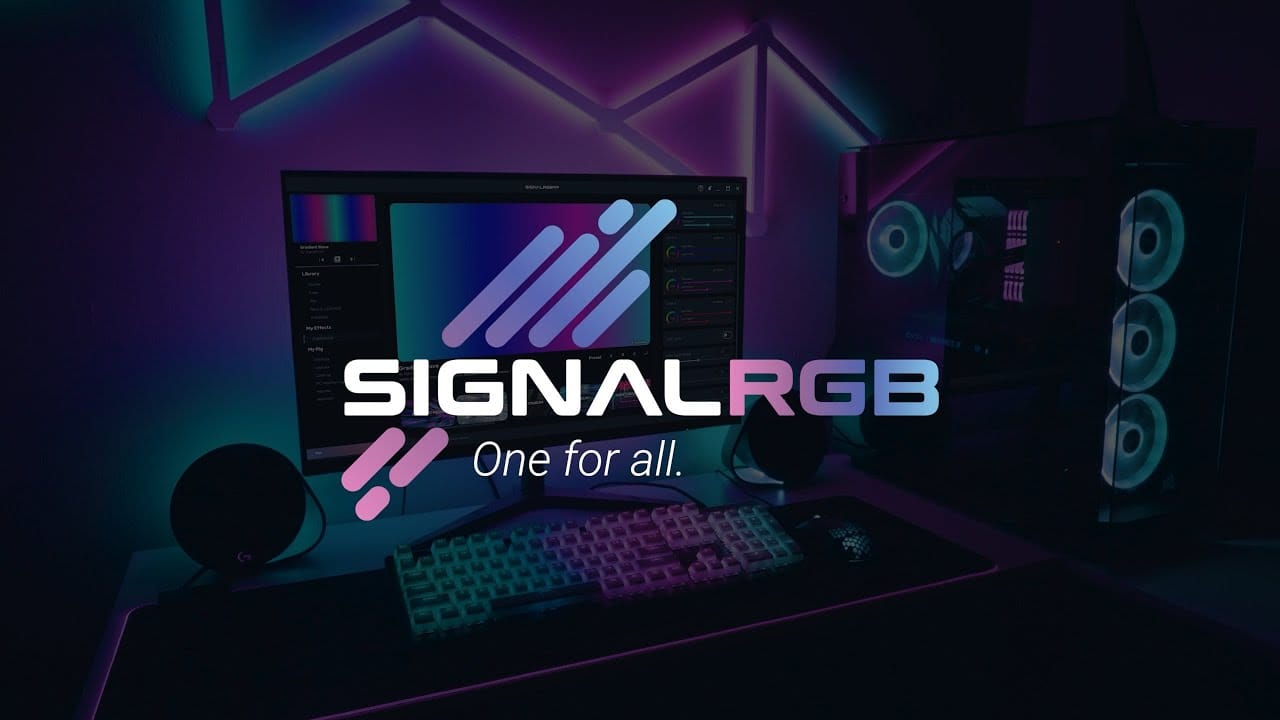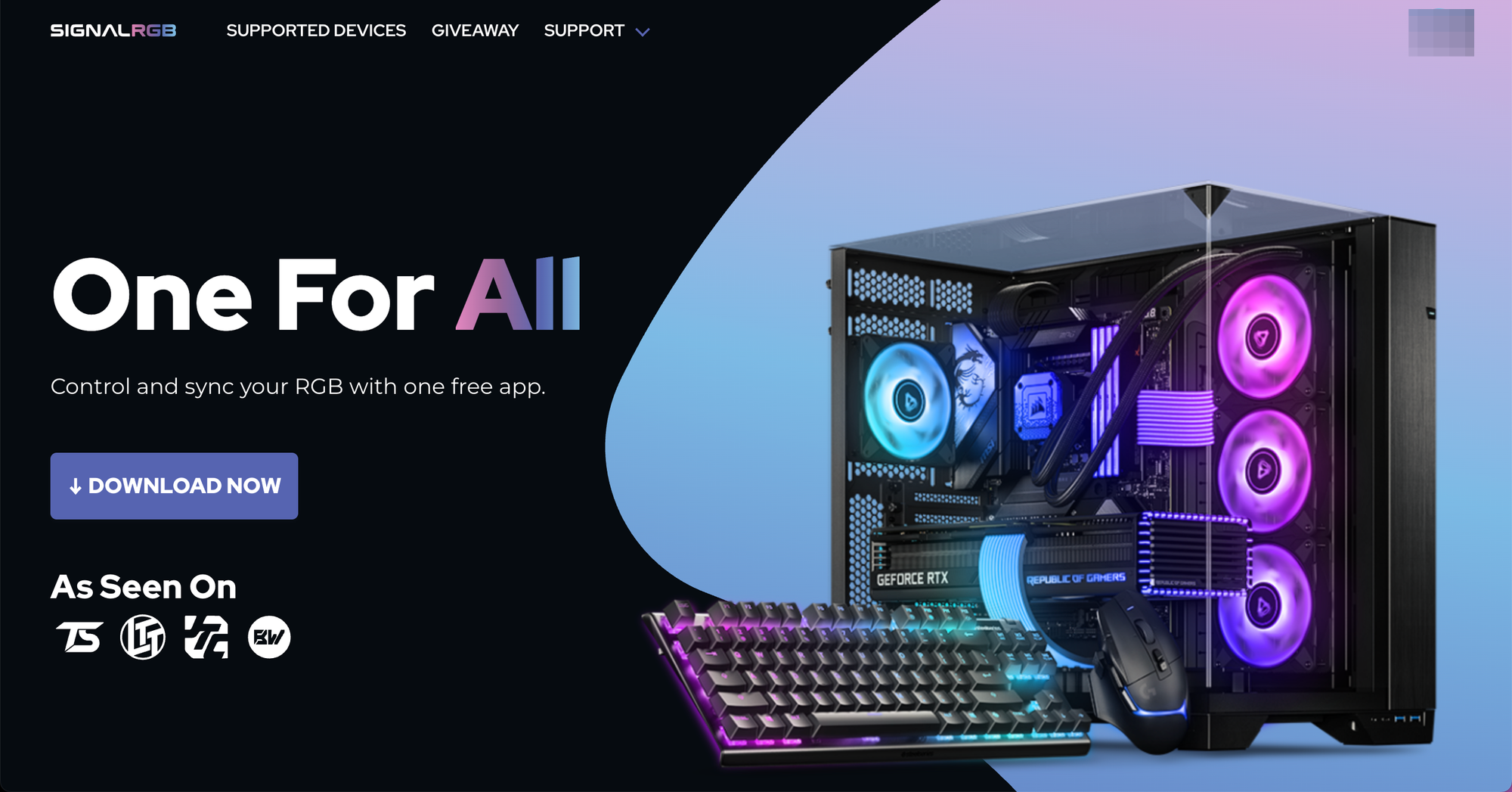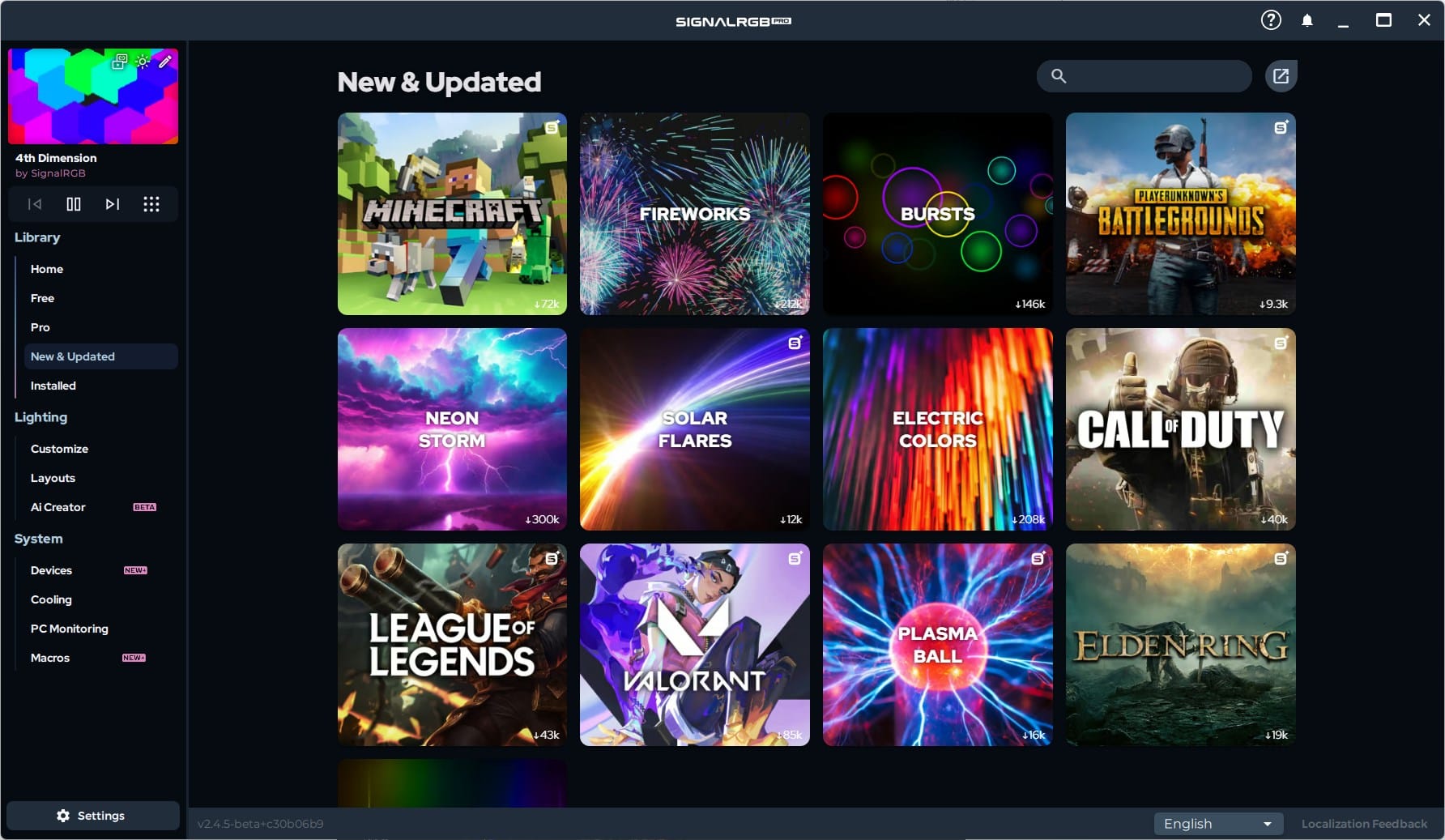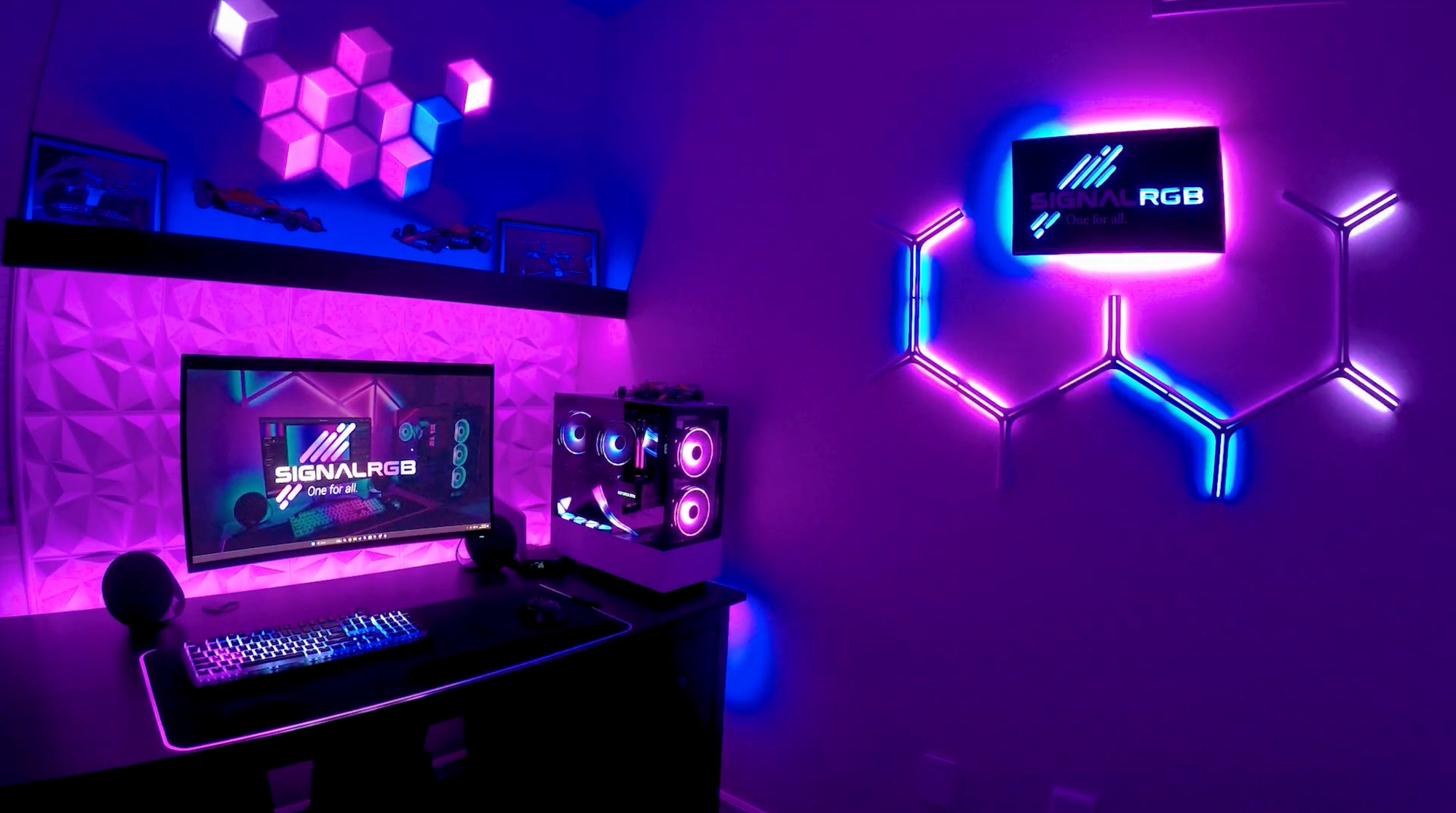
Welcome to April’s edition of our Publisher Showcase series! Each month, we dive into the stories and insights of the brilliant minds behind some of the most dynamic websites in our platform.
This month, we spoke with Timothy Sun, the founder of SignalRGB, a platform bringing order to the chaos of RGB lighting. Frustrated by the lack of interoperability between devices from different brands, Timothy leveraged his background in software engineering to build a bright solution that’s now used by millions.
Dive into Timothy’s journey below to learn how SignalRGB became the go-to platform for unified, immersive lighting experiences. 👇
First up, can you tell us a bit about your career/life background that led you to start SignalRGB?
My background combines software engineering and a lifelong passion for PC gaming and customization. Before SignalRGB, I worked in software development for several tech companies, specializing in hardware integration and user experience design. I've always been fascinated by the intersection of hardware and software, particularly in creating seamless experiences for users.
I was an early adopter of RGB peripherals and quickly became frustrated with the fragmented ecosystem – each manufacturer had their own software that couldn't communicate with others. This personal pain point, combined with my technical background, led me to envision a unified solution that would become SignalRGB.
What drove you to create SignalRGB? Did you see a specific gap in the market? Was there a particular insight that motivated you to launch it?
The creation of SignalRGB was driven by a clear gap in the market: the lack of interoperability between RGB devices from different manufacturers. PC enthusiasts, including myself, were increasingly purchasing components and peripherals with RGB lighting, but were forced to run multiple conflicting software suites simultaneously to control them. This created a fragmented user experience, system resource drain, and limited creative potential.
The key insight was recognizing that while manufacturers wanted to keep users in their ecosystems, gamers and enthusiasts craved unified control and greater creative freedom. I believed that by creating a platform-agnostic solution that could communicate with devices regardless of brand, we could unlock the full potential of RGB customization and solve a significant pain point for the community.

How long have you been running your platform and how long did it take from development until it was live?
We've been running SignalRGB for just over four years now. The initial development took approximately eight months from concept to our first public beta, which supported a limited number of devices.
However, the platform has been in continuous development since then, with our team constantly adding support for new devices, expanding features, and refining the user experience. The first stable release that supported a broader range of devices took about 14 months of intensive development. What started as a passion project has evolved into a mature platform serving millions of users worldwide.
How did you decide on the specific features and tools available on SignalRGB?
Our feature decisions have been driven by three key principles: solving real user problems, enabling creative expression, and maintaining performance efficiency.
First, we carefully studied the limitations of existing solutions and identified the most significant pain points for users. This included analyzing forum discussions, Reddit threads, and conducting user interviews to understand what features would make the biggest impact.
Second, we prioritized creating tools that would unlock creative potential that wasn't possible with separate software suites. This meant developing features like game integrations, audio visualization, and the ability to synchronize effects across all devices regardless of brand.
Finally, we focused on performance optimization from day one. Users shouldn't have to sacrifice system resources for customization, so we built SignalRGB to be as lightweight as possible while supporting a wide range of devices. Community feedback has been invaluable in our development process. Many of our most popular features were directly inspired by user suggestions through our Discord server and feedback channels.
How were you able to build a strong online presence for the platform? (e.g. SEO, forums, PPC, influencers etc)
Building our online presence has been a multi-faceted approach centered around community engagement and organic growth: Community building has been our foundation – we established an active Discord server early on that has grown into a thriving community of enthusiasts who not only provide feedback but also help each other and create custom effects to share.
We've invested significantly in content creation, developing tutorials, setup guides, and showcases that demonstrate the potential of unified RGB control. This content serves both as educational material for users and as valuable SEO assets. Strategic partnerships with influencers and content creators in the PC building and gaming space have been crucial.
Rather than one-off sponsorships, we've focused on building genuine relationships with creators who truly appreciate our solution and can authentically showcase it to their audiences. Our approach to paid advertising has been selective and targeted, focusing on platforms where PC enthusiasts and gamers gather.

What have been some of the most effective tactics to drive traffic to your platform so far?
The most effective tactics for driving traffic to SignalRGB have been: User-generated content and word-of-mouth have been unexpectedly powerful. When users create impressive lighting setups with SignalRGB, they naturally want to share them. We've capitalized on this by creating easy ways for users to showcase their setups through social media, which generates organic interest.
Our "Effects Workshop" where users can upload and share custom lighting effects has created a network effect that continuously brings in new users searching for creative RGB solutions. Game integrations have been a significant driver of interest. By creating custom lighting effects for popular games that react to in-game events, we've tapped into gaming communities looking to enhance their immersion.
Strategic timing of major updates and feature releases around key shopping periods (Black Friday, holiday season) has helped maximize visibility when people are purchasing new RGB hardware. SEO optimization focused on specific RGB device compatibility terms has been effective in capturing users actively looking for solutions to control their particular hardware configuration.
What are you most proud of in regards to the success of SignalRGB so far? Any major highlights?
I'm most proud of the vibrant community we've built around SignalRGB. Seeing users not only enjoy our software but actively contribute to its ecosystem through custom effects, troubleshooting assistance for others, and passionate advocacy has been incredibly rewarding. In terms of highlights, reaching two million active users last year was a significant milestone that validated our vision.
Another major highlight was successfully partnering with several hardware manufacturers who initially viewed us as competition but now see the value in the ecosystem we're building. These partnerships have helped us improve device compatibility and performance while giving manufacturers insights into how their products are being used.
Perhaps most meaningful are the countless messages from users with mixed-brand setups who were finally able to create their dream RGB environments after being frustrated by fragmented software for years.
What advice do you have for new and existing website owners that you wish you knew before you started?
My advice to website owners would be: Focus on solving a real problem exceptionally well rather than trying to be everything to everyone. Our initial success came from doing one thing – unifying RGB control – better than anyone else, which created a clear value proposition. Build community engagement into your platform from day one.
The relationships we've built with our users have been invaluable for feedback, word-of-mouth growth, and creating a supportive ecosystem around our product. Don't underestimate the technical aspects of website performance. We learned that load times and responsiveness significantly impact conversion rates and user satisfaction, especially for software downloads.
Plan your monetization strategy carefully to align with user experience. Our freemium model with premium features has worked well because we ensure the free version provides genuine value while premium features enhance the experience without feeling like paywalls. Be methodical about tracking user behavior and conversion paths. Understanding exactly how users navigate your site and what leads them to convert will help you optimize the most critical elements first.

What do you like best about being a part of Nitro’s network of premium gaming/entertainment websites?
Working with Nitro has been transformative for our monetization strategy. What I appreciate most is their deep understanding of the gaming audience and how that translates into ad implementations that respect our users' experience.
The premium nature of Nitro's network means we're associated with high-quality gaming properties, which aligns perfectly with our brand positioning. Their team's expertise in optimizing ad performance specifically for gaming audiences has significantly improved our revenue without compromising user experience.
I've been particularly impressed with Nitro's willingness to collaborate on custom solutions that fit our unique platform requirements. Unlike other ad partners we've worked with, they understand that gaming properties have specific needs and user expectations around ad placements and formats.
The transparent reporting and regular strategy consultations have helped us make better decisions about our overall business model and where advertising fits within it. It's been a true partnership rather than just a service provider relationship.
What’s next for SignalRGB?
The future of SignalRGB is focused on three key areas of expansion: We're developing deeper integrations with games and applications, moving beyond just reactive lighting to create truly immersive experiences that enhance gameplay and productivity. This includes partnerships with game developers to create native SignalRGB support in upcoming titles.
We're expanding our hardware compatibility to include smart home devices, allowing users to create synchronized lighting environments that extend beyond their PC setup to their entire room or home.
We're investing heavily in our effects creation tools to make them more accessible to non-technical users. Our goal is to democratize RGB creativity so anyone can create custom effects without needing coding knowledge.
On the business side, we're exploring new partnership models with hardware manufacturers that could include pre-installation of SignalRGB on devices and co-developed exclusive effects. Ultimately, our vision is to evolve SignalRGB from a utility for controlling RGB lighting to a platform that unifies and enhances the entire digital environment around users – making technology more immersive, intuitive, and personalized.
A big thank you to Timothy from SignalRGB. Keep your eyes peeled for more insightful interviews like this in next month's edition of our Publisher Showcase, where we’ll continue to spotlight one of the 500+ stand out websites on Nitro, diving deep into their unique success!
Nitro is dedicated to reinventing website monetization for the gaming industry. Our ad tech platform combines uncompromised user experience, nitro-speed revenue and service with Net 7 Payouts, same-day support and the industry’s fastest ad loading.